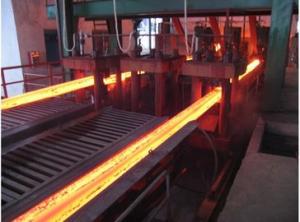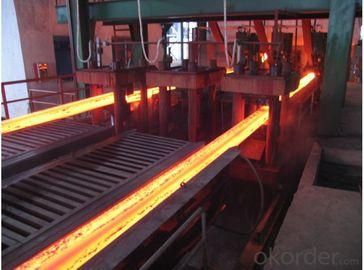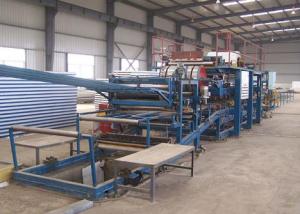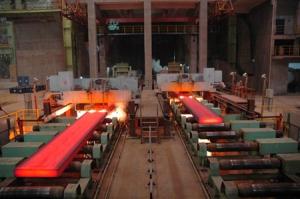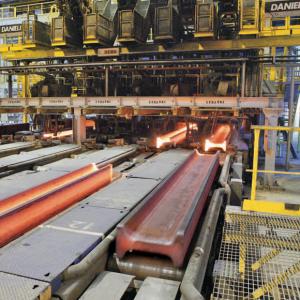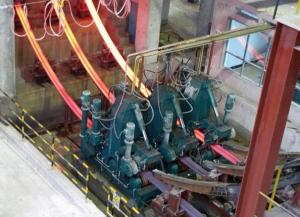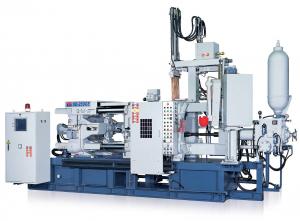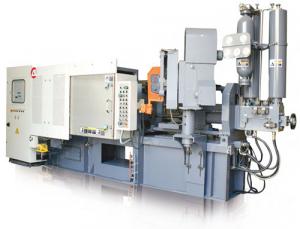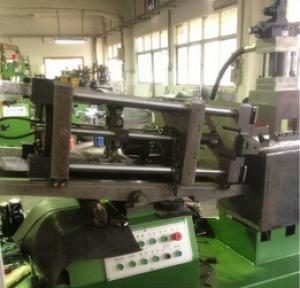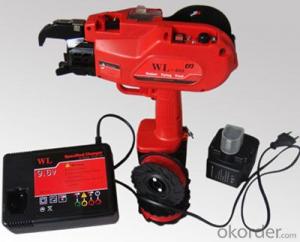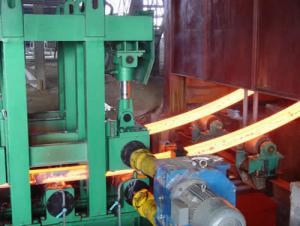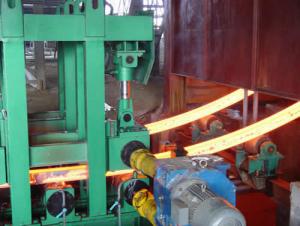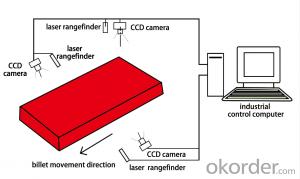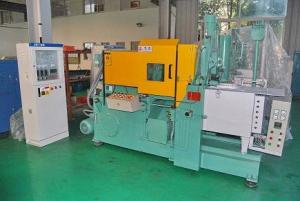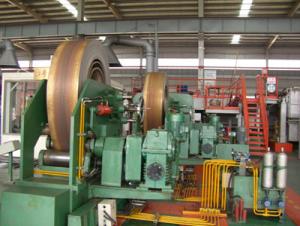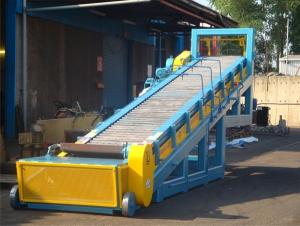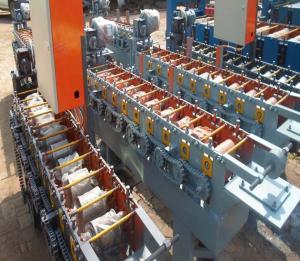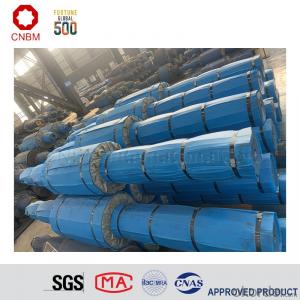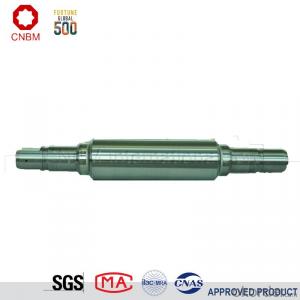Continuous Casting Machine for Square Billet
- Loading Port:
- China Main Port
- Payment Terms:
- TT or LC
- Min Order Qty:
- 1 Set set
- Supply Capability:
- 20 Sets Per Year set/month
OKorder Service Pledge
Quality Product, Order Online Tracking, Timely Delivery
OKorder Financial Service
Credit Rating, Credit Services, Credit Purchasing
You Might Also Like
Technology process:
1.Heat the EVA film
2.Cover the heated EVA film on the mould(can be made from wood or aluminum)
3.Spray a coating in a certain baume degree
4.Put on the empty blask
5.Sand-up the flask and vibrate to compaction
Packaging & Delivery
Packaging Details:containers
Delivery Detail:Complete one set of equipment needs for three months
- Q: What are the common environmental regulations for metal casting machinery?
- Environmental regulations for metal casting machinery vary depending on jurisdiction and industry standards, but there are several key regulations that are commonly followed to ensure environmental protection. One important regulation is the control of air pollution. Metal casting machinery can release pollutants like particulate matter, volatile organic compounds (VOCs), and hazardous air pollutants (HAPs). Many countries have established air pollution control requirements to address these emissions. These requirements may include using pollution control devices such as baghouses or electrostatic precipitators to capture and remove particulate matter. Technologies like scrubbers or thermal oxidizers can also help reduce VOC and HAP emissions. Water pollution is another concern related to metal casting machinery. Regulations focus on preventing the discharge of pollutants into water bodies. They often require the use of wastewater treatment systems like settling tanks or filtration systems to remove contaminants before releasing water into the environment. Proper containment and handling of hazardous materials like metal cleaning solvents or cooling fluids are also crucial to prevent accidental spills or leaks that could cause water pollution. Waste management is also a significant aspect of environmental regulations for metal casting machinery. Metal casting processes generate various types of waste, including spent foundry sand, slag, and scrap metal. Managing these wastes properly is essential to minimize their environmental impact. Recycling and reusing waste materials whenever possible can help reduce waste generation. When disposal is necessary, compliance with regulations regarding proper disposal methods such as landfilling or incineration is important to prevent soil or groundwater contamination. In addition, noise pollution is often regulated to minimize the impact of metal casting machinery on surrounding communities. Measures like using sound barriers or enclosure systems can help reduce the noise generated by these machines. Overall, common environmental regulations for metal casting machinery aim to control and mitigate the various forms of pollution associated with these processes. It is crucial to comply with these regulations to protect the environment, prevent adverse health effects, and promote sustainable manufacturing practices.
- Q: How do you ensure compliance with industry guidelines and best practices in metal casting processes?
- To guarantee adherence to industry guidelines and best practices in metal casting processes, there are several crucial measures that can be employed: 1. Stay abreast of industry standards: Consistently review and keep up-to-date with the most recent guidelines, regulations, and best practices published by relevant industry organizations like the American Foundry Society (AFS), the International Organization for Standardization (ISO), and the Occupational Safety and Health Administration (OSHA). This will help ensure that your metal casting processes align with the most current standards. 2. Establish a robust quality management system: Develop a quality management system (QMS) that outlines the necessary procedures, controls, and documentation for compliance. This system should encompass clear guidelines for every stage of the metal casting process, from material selection and preparation to mold design, casting, finishing, and inspection. Regular audits and reviews of the QMS will aid in identifying any gaps or areas for improvement. 3. Provide training and education for employees: Conduct regular training sessions to educate employees about industry guidelines and best practices. This should include specific training on safety protocols, proper equipment usage, and quality control measures. By ensuring that all employees are well-informed and competent in their roles, you can minimize the risk of non-compliance. 4. Perform internal audits and inspections: Regularly carry out internal audits and inspections to evaluate compliance with industry guidelines and identify areas for improvement. This can involve reviewing documentation, inspecting equipment, and verifying that processes are being followed correctly. Any deviations or non-compliance discovered during these audits should be promptly addressed and corrective actions taken. 5. Foster collaboration with suppliers and customers: Maintain open communication with your suppliers and customers to ensure that their processes align with industry guidelines as well. This can involve sharing best practices, conducting joint audits, and encouraging continuous improvement across the supply chain. 6. Embrace continuous improvement: Instill a culture of continuous improvement within your organization. Encourage employees to propose and implement process enhancements and innovations, while also staying informed about emerging technologies and techniques within the industry. Regularly review and update your processes to reflect the latest advancements and best practices. By adhering to these steps, you can guarantee compliance with industry guidelines and best practices in metal casting processes, all while nurturing a culture of quality and safety within your organization.
- Q: What are the trends in metal casting machinery technology?
- Metal casting machinery technology is in a constant state of evolution, with several observable trends in the field. One significant trend is the increasing integration of automation and robotics into metal casting machinery. Automation enables more precise and efficient casting processes, reducing the risk of errors and enhancing productivity. Robotic systems are now utilized for tasks such as mold handling, pouring, and finishing, resulting in faster production cycles and higher-quality castings. Another trend involves the use of advanced simulation software for the design and optimization of metal casting processes. These software tools assist engineers in analyzing and predicting the behavior of molten metal, allowing for the optimization of casting parameters and the reduction of defects. This not only improves casting quality but also minimizes material waste and saves costs. Furthermore, there is a growing emphasis on sustainability and environmental friendliness in metal casting machinery technology. Manufacturers are implementing energy-efficient designs and exploring alternative materials and processes that minimize environmental impact. Recycling and waste reduction initiatives are also gaining momentum, helping to decrease the overall carbon footprint of metal casting operations. Additionally, the development of additive manufacturing, or 3D printing, is revolutionizing metal casting. This technology enables the production of intricate and complex molds and cores with high accuracy, reducing the need for traditional pattern-making methods. 3D printing also facilitates rapid prototyping and customization, opening up new possibilities in product development and design. Lastly, the integration of data analytics and the Internet of Things (IoT) is an emerging trend in metal casting machinery technology. Casting equipment now incorporates sensors and data collection systems, providing real-time monitoring and analysis of process variables. This data-driven approach allows for proactive maintenance, improved process control, and the optimization of casting parameters, resulting in higher efficiency and reduced downtime. In summary, the trends in metal casting machinery technology revolve around automation and robotics, advanced simulation software, sustainability, additive manufacturing, and data analytics. These trends drive innovation, enhance efficiency, and improve the overall quality of metal casting processes.
- Q: What are some factors that affect the cost of metal casting machinery?
- The cost of metal casting machinery can be affected by various factors. One crucial factor to consider is the size and capacity of the machinery. Larger machinery with higher capacity tends to be more expensive due to the need for additional materials and components to handle larger volumes of metal. Another factor that plays a role in determining the cost is the complexity and precision of the machinery. Machinery with advanced technology and intricate design features generally comes with a higher price tag. This is because the manufacturing process for such machinery may involve extra steps and require more sophisticated equipment. The quality and durability of the materials used in constructing the machinery also impact its cost. Machinery made from high-quality materials like stainless steel or high-grade alloys tends to be more expensive due to their increased strength, longevity, and resistance to wear and tear. Furthermore, the level of automation and technological advancements incorporated into the machinery can affect its cost. Machinery that utilizes advanced automation systems, computer numerical control (CNC) technology, or robotic systems will generally have a higher price due to the enhanced precision, efficiency, and productivity they offer. Lastly, market demand and competition within the industry can influence the cost of metal casting machinery. If there is high demand for a particular type of machinery, manufacturers may increase their prices. Conversely, intense competition among machinery suppliers may lead to lower prices as manufacturers try to attract customers. In conclusion, the cost of metal casting machinery is influenced by factors such as size and capacity, complexity and precision, quality of materials, level of automation, and market demand and competition. It is crucial for businesses to carefully evaluate their specific needs and consider these factors when purchasing metal casting machinery to ensure they receive the best value for their investment.
- Q: What are the different types of corrosion resistance inspection methods used in metal casting machinery?
- Metal casting machinery undergoes corrosion resistance inspection using several different methods. These methods are utilized to assess the machinery's ability to withstand corrosion and protect its metal components from deterioration. Some commonly employed inspection methods include: 1. Visual Inspection: Technicians visually examine the machinery for signs of corrosion such as rust, discoloration, or pitting. This method helps identify surface-level corrosion. 2. Non-Destructive Testing (NDT): NDT methods, such as ultrasonic testing, radiography, or magnetic particle inspection, detect internal corrosion or flaws without causing damage to the structure. These methods effectively identify hidden corrosion or defects. 3. Electrochemical Testing: This method measures the electrochemical properties of the machinery to determine its resistance to corrosion. Techniques like polarization resistance, electrochemical impedance spectroscopy, or potentiodynamic scanning assess the machinery's corrosion behavior and performance. 4. Salt Spray Testing: The machinery is exposed to a controlled environment of salt spray or fog to simulate corrosive conditions. The appearance and extent of corrosion after a specified time period evaluate the machinery's resistance to corrosion. 5. Coating Evaluation: Protective coatings or paints are applied to metal casting machinery to enhance its corrosion resistance. Coating evaluation methods, such as adhesion tests, thickness measurement, or porosity testing, assess the quality and effectiveness of these protective coatings. 6. Environmental Exposure Testing: The machinery is subjected to real-world environmental conditions for an extended period. Factors like humidity, temperature variations, or exposure to corrosive substances evaluate its corrosion resistance under realistic conditions. 7. Corrosion Coupons: Small metal samples, known as corrosion coupons, are embedded in the machinery and periodically examined to determine the rate and extent of corrosion. These coupons provide valuable data on the machinery's corrosion resistance over time. By employing these various inspection methods, manufacturers and operators of metal casting machinery can ensure the equipment's integrity and durability, minimize downtime, and extend its lifespan.
- Q: Can metal casting machinery be used for investment casting of foam?
- No, metal casting machinery cannot be used for investment casting of foam. Metal casting machinery is specifically designed for casting molten metal into molds, while investment casting of foam involves using foam patterns that are replaced with molten metal. The process of investment casting of foam requires different equipment and techniques, such as creating a foam pattern, coating it with a ceramic shell, and then melting the foam pattern out to create a cavity for the molten metal. Therefore, specialized machinery and equipment are necessary for investment casting of foam, which is different from traditional metal casting machinery.
- Q: What are the cooling and solidification processes in metal casting machinery?
- The cooling and solidification processes in metal casting machinery play a crucial role in determining the quality and properties of the final cast metal product. These processes occur after the molten metal is poured into the mold and are essential for achieving the desired shape, strength, and integrity of the casting. During cooling, the molten metal gradually loses its heat and transitions from a liquid state to a solid state. This cooling process can be influenced by various factors such as the type of metal being cast, the mold material, and the cooling medium used. In most metal casting processes, cooling is achieved through natural or controlled cooling methods. Natural cooling, also known as air cooling, involves allowing the cast metal to cool down naturally in the open atmosphere. This method is commonly used for small-scale castings or when the metal being cast has a low melting point. However, natural cooling may result in uneven cooling rates and can lead to the formation of internal defects or shrinkage in the casting. Controlled cooling, on the other hand, involves the use of specialized cooling systems to regulate the cooling rate of the molten metal. This method is particularly crucial for large-scale or complex castings where uniform cooling is essential. Controlled cooling can be achieved through the use of water or air-cooled molds, chill plates, or cooling channels integrated into the mold design. These cooling systems help remove heat from the molten metal at a controlled rate, resulting in a more uniform solidification process and minimizing the risk of defects. During solidification, the molten metal transforms into a solid state as it cools down. The solidification process is influenced by several factors, including the composition of the metal, the cooling rate, and the presence of alloying elements. The solidification of metal can occur in two main ways: through nucleation and growth. Nucleation is the initial formation of solid crystals within the molten metal. It begins at specific sites called nucleation sites, which can be impurities or mold surfaces. Once nucleation occurs, the solid crystals continue to grow as more liquid metal solidifies around them. The growth of these crystals determines the microstructure and grain structure of the final casting. Proper control of the cooling and solidification processes is essential in metal casting machinery to ensure the desired mechanical properties, dimensional accuracy, and surface finish of the cast metal product. By carefully designing the cooling systems and controlling the cooling rate, manufacturers can minimize the occurrence of defects such as porosity, shrinkage, or cracking. Additionally, manipulating the solidification process can also help to control the grain structure and improve the mechanical properties of the casting, such as strength and ductility. Overall, the cooling and solidification processes are critical steps in metal casting machinery as they directly impact the quality and performance of the final cast metal product.
- Q: How is the shell mold removed from the casting in metal casting machinery?
- The act of removing the shell mold from the casting in metal casting machinery is known as shakeout. Shakeout entails the utilization of mechanical or vibratory equipment to disassemble and eliminate the shell mold from the solidified metal casting. Initially, the casting is placed within a shakeout machine, which can take the form of a vibrating conveyor, a rotary drum, or a shakeout table. The purpose of the machine is to agitate and jolt the casting, resulting in the cracking and disintegration of the shell mold. While the machine shakes the casting, the fragmented particles of the shell mold become loosened and separated from the metal casting. The vibrations aid in breaking the bond between the casting and the shell mold, facilitating the effortless removal of the mold. Once the shell mold has been broken, it is typically gathered and disposed of, while the metal casting remains. Depending on the size and complexity of the casting, additional cleaning or finishing processes may be necessary to eliminate any residual shell mold particles or to achieve the desired surface finish. In summary, the shakeout process in metal casting machinery is responsible for the removal of the shell mold from the casting. This process entails the shaking or vibrating of the casting to fracture and separate the particles of the shell mold from the solidified metal.
- Q: How do you ensure compliance with safety guidelines and protect operators from hazards?
- To ensure compliance with safety guidelines and protect operators from hazards, there are several key measures that should be implemented. 1. Training and Education: Provide comprehensive training programs to operators, ensuring they understand the safety guidelines, potential hazards, and proper procedures to follow. Regular refresher courses should also be conducted to keep operators updated on any changes or new safety practices. 2. Standard Operating Procedures (SOPs): Develop and enforce clear, well-documented SOPs that outline the necessary safety precautions and steps to be followed while operating equipment or performing tasks. These SOPs should address potential hazards and specify the use of personal protective equipment (PPE) where required. 3. Risk Assessments: Conduct regular risk assessments to identify potential hazards and evaluate their severity. This allows for the development of proactive measures to mitigate risks and ensure that operators are adequately protected. 4. Safety Equipment and Maintenance: Provide operators with appropriate safety equipment, such as gloves, helmets, safety glasses, and ear protection, to minimize the risk of injuries. Regular inspection and maintenance of safety equipment is crucial to ensure its effectiveness. 5. Regular Safety Audits: Conduct routine safety audits to assess compliance with safety guidelines and identify any gaps or areas for improvement. These audits should be carried out by trained personnel who can identify potential hazards and ensure corrective actions are taken promptly. 6. Communication and Reporting: Foster an open and transparent communication culture where operators are encouraged to report any safety concerns or incidents. Establish a system for reporting near misses, accidents, or hazardous conditions, and promptly investigate and address these issues to prevent future occurrences. 7. Ongoing Monitoring and Supervision: Regularly monitor operators' adherence to safety guidelines and provide supervision as necessary. This could include periodic checks, observation of work practices, and feedback sessions to reinforce safe behaviors and address any deviations. 8. Continuous Improvement: Foster a culture of continuous improvement by regularly reviewing and updating safety guidelines and procedures based on feedback from operators, safety audits, risk assessments, and industry best practices. Encouraging suggestions and involvement from operators can also contribute to a safer working environment. By implementing these measures, organizations can ensure compliance with safety guidelines, protect operators from hazards, and create a culture of safety where everyone is actively involved in maintaining a safe work environment.
- Q: Safety technology of casting machinery
- Casting production belongs to hot processing, and its production process includes: sand mixing, molding, melting, pouring and cleaning and so on.
Our professions include metallurgical technology, equipment and automation. We can provide the best solutions to the production process, design & manufacture of equipment and electrical automation regarding various industries in domestic and foreign districts with exquisite technology and fine quality service. We can provide all-around services to customers from development & design to the provision, installation and running of products.Strong technical strength, advanced equipment manufacturing technology, fine quality professional talents, and perfect service systems all bring about reliability, relaxation, convenience and delight to the cooperation with customers from beginning to end.
1. Manufacturer Overview
| Location | Jiangsu,China (Mainland) |
| Year Established | 2000 |
| Annual Output Value | |
| Main Markets | South America Eastern Europe Southeast Asia Africa Mid East South Asia Domestic Market |
| Company Certifications |
2. Manufacturer Certificates
| a) Certification Name | |
| Range | |
| Reference | |
| Validity Period |
3. Manufacturer Capability
| a) Trade Capacity | |
| Nearest Port | SHANGHAI |
| Export Percentage | 21% - 30% |
| No.of Employees in Trade Department | 3-5 People |
| Language Spoken: | English, Chinese |
| b) Factory Information | |
| Factory Size: | |
| No. of Production Lines | |
| Contract Manufacturing | |
| Product Price Range | |
Send your message to us
Continuous Casting Machine for Square Billet
- Loading Port:
- China Main Port
- Payment Terms:
- TT or LC
- Min Order Qty:
- 1 Set set
- Supply Capability:
- 20 Sets Per Year set/month
OKorder Service Pledge
Quality Product, Order Online Tracking, Timely Delivery
OKorder Financial Service
Credit Rating, Credit Services, Credit Purchasing
Similar products
Hot products
Hot Searches
